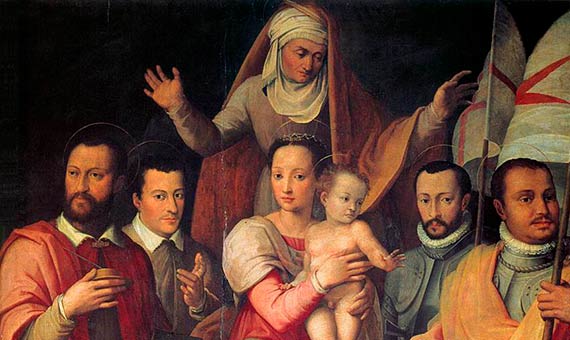Besides its Latin name “dīvide et īmpera”, the expression “divide and rule” is not based on the Old Romans, but on the Italian philosopher, politician, poet, diplomat and historian Niccolò Machiavelli and his famous book “Il Principe” (Italian for “The Prince”), a book about the philosophy of politics and government, especially written for the Medici family, which ruled Florence and had been the most important family dynasty at this time.

Divide and rule stands for the principle to divide a big group into smaller sub groups, to make them easier to rain. This not just through pure dividing, but also a construction that the new sub-groups are not having relations with each other, but the relations are limited to the one leader. A strategy, what was not Machiavelli’s invitation, in fact he received the inspiration for this by the foreign politics of the Roman Empire, already used by Emperor Cesar himself.
Nearly 500 years later this principle gets used for Artificial Intelligence and its learning process. Developers at the Microsoft company Maluu used this concept to teach their AI playing Ms. Pac Man. The software divides the different tasks into sub-tasks:
- Eat energy pills
- Eat the additional fruits
- Escaping the ghosts
- Catching the blue ghosts
As the AI (similar to traditional software) is able to multitask, it calculates for each sub-tasks its own learning algorithm, including virtual positive multiplier for successful executed sub-tasks (as eating an energy pill).
The four sub-tasks work simultaneously, but completely independent from each other. The AI takes the average value as the direction for Ms. Pac Man. Just as Machiavelli defined, the AI separated the four sub-tasks and then evaluated on the next higher level the results to merge them into the decision in which direction Ms. Pac Man should move.
In times where we became Cyborgs, as part of our memory was outsourced to Wikipedia and other parts of the internet, we can analyze how machine learning may get used for humans, too. Companies are in the process to go find new paths for their training, and “micro-learnings” is one of them. Instead to do a complete training and explain all aspects of a process, the different tasks get separated and included in small five minutes online-trainings. As the trainings are short, employees stay motivated and concentrated. A series of micro-learnings replaces the traditional longer web-trainings. If required, single episodes can get fostered and repeated individually. At the end human and machine learning is quite similar.
Comments on this publication